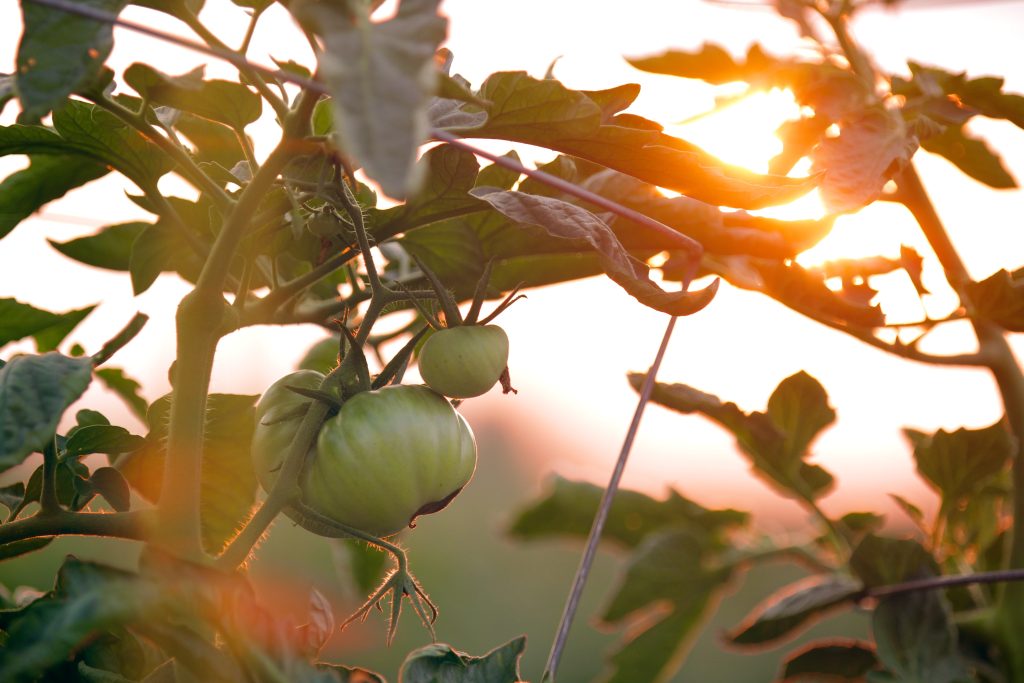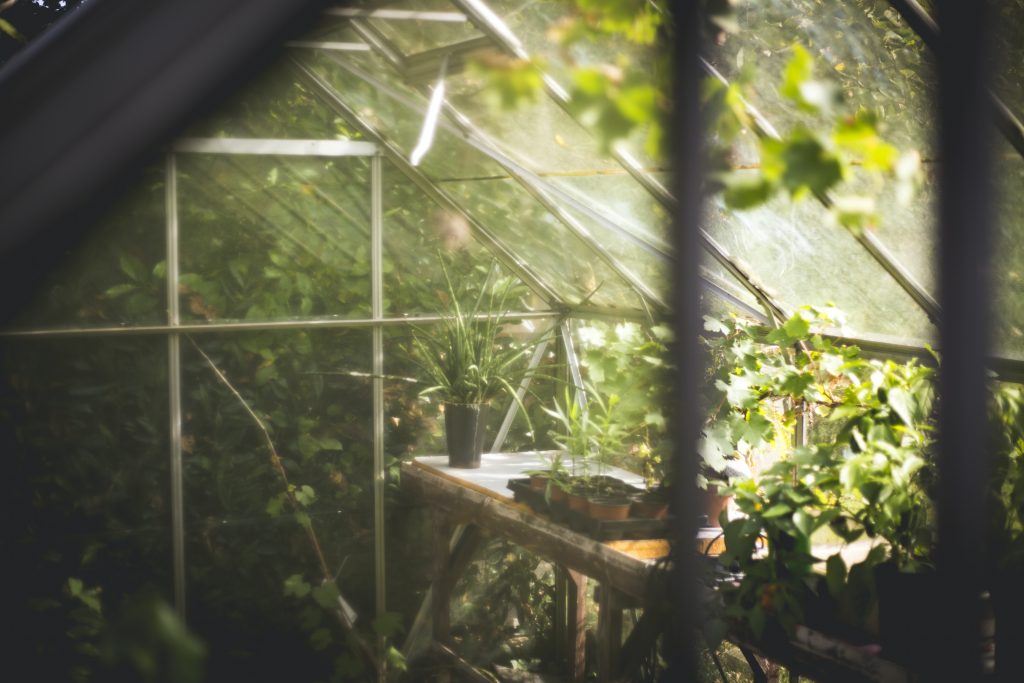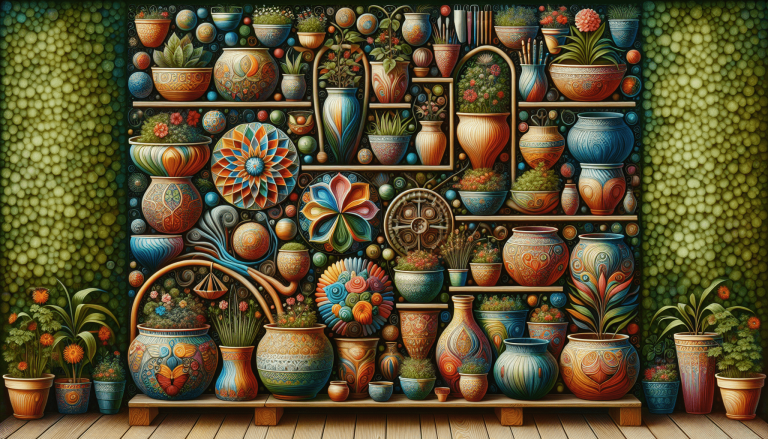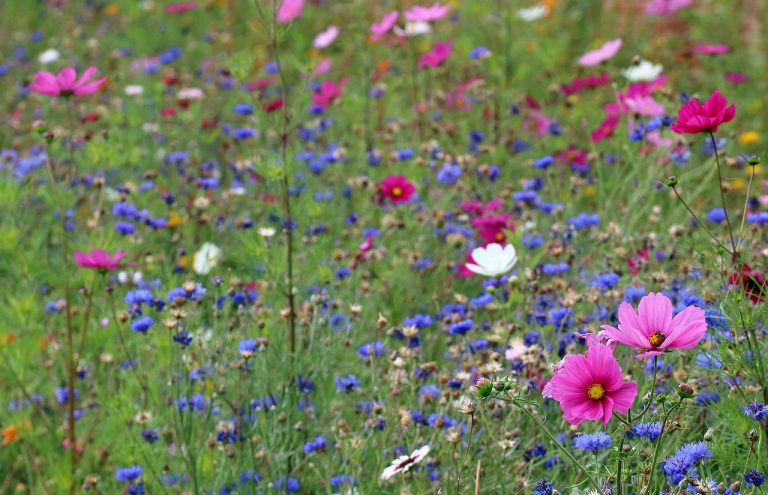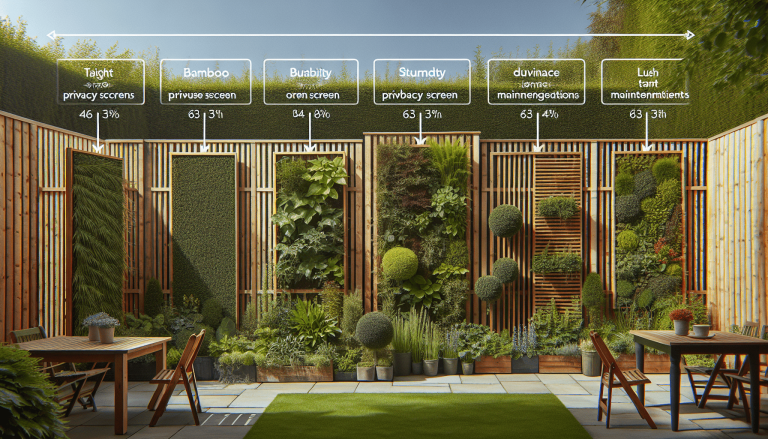If you’ve ever dreamed of creating a charming cottage garden in the UK, you’re in luck! Whether you live in a countryside village or a bustling city, transforming your outdoor space into a cozy, floral paradise is easier than you might think. With a few key elements and some creativity, you can bring the beauty and rustic charm of a traditional English cottage garden right to your own backyard. From the delightful mix of flowers to the enchanting pathways and quaint seating areas, this article will guide you step by step in achieving your dream cottage garden. So, grab your gardening gloves and let’s bring a touch of whimsy and tranquility to your outdoor oasis!
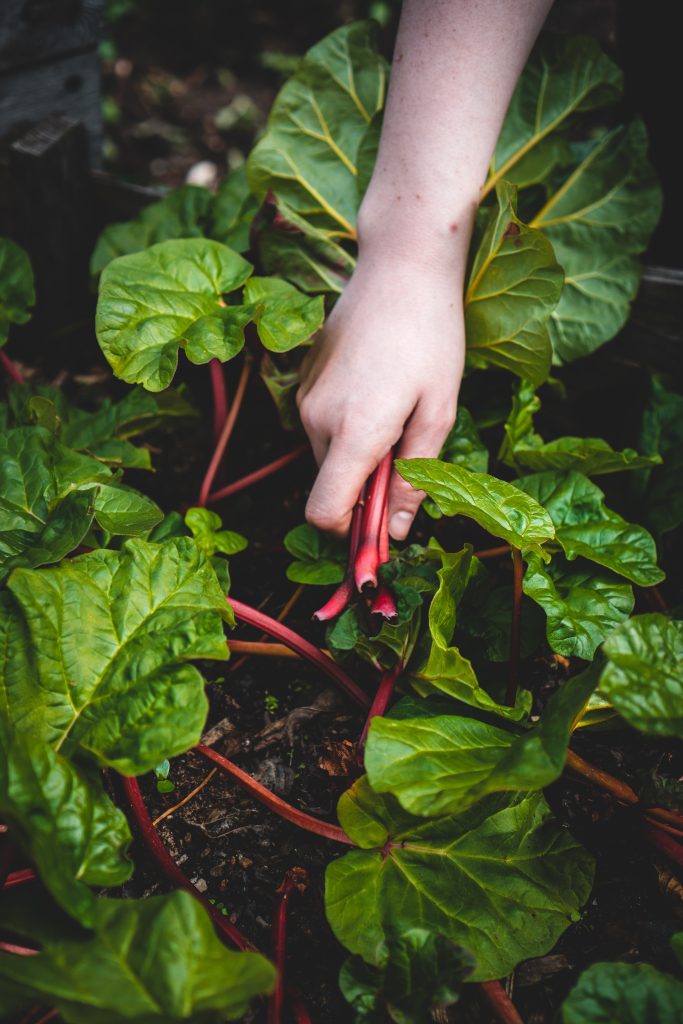
Table of Contents
ToggleWhat is a cottage garden?
A cottage garden is a type of garden that reflects the charm and character of a traditional English countryside. It is known for its informal and romantic appearance, combining a variety of flowers, herbs, and vegetables in a harmonious and natural way. Cottage gardens often feature traditional features such as picket fences, trellises, and arbors, creating a cozy and welcoming atmosphere.
Definition
A cottage garden is a style of garden that originated in the United Kingdom during the 19th century. It was popularized by the English cottage homes, where small plots of land were filled with an abundance of plants and flowers. This style of gardening focuses on creating a relaxed and informal look, as opposed to the more formal and structured gardens commonly found in stately homes.
Characteristics
Cottage gardens are characterized by their wild and unrefined appearance, with plants densely packed together and allowed to freely intertwine. They often include a mix of perennials, annuals, and biennials, giving the garden a constantly changing display throughout the seasons. The key characteristics of a cottage garden include:
-
Colorful flowers: Cottage gardens are known for their vibrant and diverse flower displays. Roses, delphiniums, hollyhocks, and lupins are commonly found in cottage gardens, along with a variety of other flowering plants.
-
Informal layout: Cottage gardens have a relaxed and natural layout, with winding pathways, meandering borders, and hidden seating areas. The layout is designed to create a sense of discovery and surprise as you explore the garden.
-
Traditional features: Classic elements such as picket fences, trellises, and arbors are often incorporated into cottage gardens. These features not only add charm and character but also provide support for climbing plants and create vertical interest.
-
Productive areas: Unlike formal gardens, cottage gardens often include areas dedicated to growing herbs, vegetables, and fruit. These productive areas add practicality and functionality to the garden, allowing you to enjoy fresh produce throughout the year.
Choosing the right location
When creating a cottage garden, choosing the right location is crucial for the success of your plants. Consider the following factors:
Considering climate and soil type
The climate and soil type in your area will greatly influence the types of plants that can thrive in your cottage garden. Research local climate data and choose plants that are suitable for your region’s temperature and rainfall patterns. Additionally, understand the soil type in your garden – whether it is sandy, clayey, or loamy – and select plants that are well-suited to those conditions.
Assessing sunlight and shade
The amount of sunlight a garden receives is another important consideration when choosing a location for your cottage garden. Most flowering plants require at least six hours of direct sunlight a day to thrive, so choose an area that receives adequate sunlight. However, also consider areas that receive partial or dappled shade, as they can provide relief for shade-tolerant plants and create more varied planting opportunities.
Analyzing drainage
Good drainage is essential for a successful cottage garden. Excess water can lead to root rot and other fungal diseases, so it’s important to choose a location with well-draining soil. If your garden has poor drainage, consider implementing drainage solutions such as installing raised beds or improving the soil with organic matter to promote better water flow.
Garden design and layout
The design and layout of a cottage garden play a significant role in creating its unique charm and appeal. Consider the following tips when planning your garden:
Creating a natural and informal look
One of the defining characteristics of a cottage garden is its natural and informal appearance. Embrace the beauty of imperfection by allowing plants to grow freely and intertwine with each other. Avoid strict lines and geometrical patterns, and instead opt for a more organic layout that mimics nature.
Planning pathways and borders
Creating well-defined pathways is essential in a cottage garden to provide structure and guide visitors through the space. Use materials such as gravel, stepping stones, or even reclaimed bricks to create paths that blend seamlessly with the overall aesthetic of the garden. Along the pathways, plant borders filled with colorful flowers and foliage to add interest and define the edges.
Incorporating traditional features
To enhance the charm and authenticity of your cottage garden, incorporate traditional features such as picket fences, trellises, and arbors. These elements not only add visual appeal but also serve practical purposes, such as providing support for climbing plants or creating separate garden rooms. Choose materials that complement the style of your garden, such as weathered wood or wrought iron, to achieve a cohesive and timeless look.
Selecting appropriate plants
Choosing the right plants is crucial for creating a beautiful and thriving cottage garden. Consider the following factors when selecting plants for your garden:
Choosing native and cottage garden plants
To create an authentic cottage garden, focus on incorporating native plants that are well-adapted to your local climate and soil conditions. Native plants are generally easier to care for and attract local wildlife, contributing to a more sustainable and balanced ecosystem. Additionally, include traditional cottage garden plants such as roses, lavender, foxgloves, and hollyhocks to capture the essence of this style.
Focusing on colorful flowers
One of the hallmarks of a cottage garden is its vibrant and colorful flower displays. Choose a mix of annuals, perennials, and biennials that bloom at different times of the year to ensure a continuous display of color. Opt for a variety of flower shapes, sizes, and heights to add interest and create depth in your garden.
Including herbs and vegetables
Cottage gardens traditionally include areas dedicated to growing herbs, vegetables, and fruit. Incorporate a selection of culinary and medicinal herbs, such as rosemary, thyme, and chamomile, which not only provide practical benefits but also add fragrance and texture to the garden. Additionally, consider planting vegetables and fruits that fit the aesthetic of a cottage garden, such as heirloom tomatoes, rainbow chard, and strawberries.
Consideration for seasonal interest
To create a cottage garden that delights throughout the year, choose plants that offer seasonal interest. Select spring-blooming bulbs like daffodils and tulips, summer-flowering perennials like coneflowers and daisies, and fall-blooming plants like asters and sedums. Incorporate plants with interesting foliage and berries to add visual appeal and attract birds and other wildlife during the colder months.
Establishing a cottage garden
Once you have planned your garden and selected the appropriate plants, it’s time to establish your cottage garden. Follow these steps to ensure a successful start:
Preparing the soil
Before planting, it’s important to prepare the soil to create optimal growing conditions for your plants. Remove any weeds, rocks, or debris from the planting area. Loosen the soil using a garden fork or tiller, breaking up any compacted areas. Incorporate organic matter such as compost or well-rotted manure to improve soil fertility and drainage.
Planting and spacing
When it comes to planting your cottage garden, follow the recommended planting instructions for each specific plant. Pay attention to the spacing requirements to ensure that plants have enough room to grow and won’t compete for resources. Consider the mature size of each plant and visualize how they will look when fully grown to achieve a balanced and visually appealing planting scheme.
Mulching and watering
After planting, apply a layer of organic mulch around the base of your plants to retain moisture and suppress weed growth. Mulch also helps regulate soil temperature and prevents erosion. Water your newly planted garden thoroughly, and continue to water regularly as needed, especially during dry spells. Monitor the soil moisture levels and make adjustments to your watering schedule accordingly.
Caring for your cottage garden
Cottage gardens require ongoing care to ensure their long-term beauty and productivity. Follow these tips to keep your garden looking its best:
Weeding and pest control
Regularly weed your garden to prevent competition for resources and maintain a tidy appearance. Use organic weed control methods such as hand weeding, mulching, or spot treatments with eco-friendly herbicides. Monitor your plants for signs of pests such as aphids or slugs and employ appropriate pest control methods, such as using physical barriers or introducing beneficial insects like ladybugs or lacewings.
Pruning and deadheading
Pruning and deadheading are important tasks to keep your cottage garden plants healthy and promote continuous blooming. Prune shrubs and trees in accordance with their specific care requirements, removing any dead or diseased branches. Deadhead spent flowers regularly to encourage the production of new blooms and prevent self-seeding, which can sometimes result in overcrowding.
Dividing and transplanting
As plants grow and multiply, it may be necessary to divide and transplant them to prevent overcrowding and maintain their vigor. Dividing perennials every few years helps rejuvenate plants and promote better flowering. When transplanting, take care to provide the new location with appropriate soil preparation and adequate water to help the plant establish itself successfully.
Attracting wildlife
A cottage garden can become a haven for wildlife, attracting birds, butterflies, and beneficial insects. Consider these tips to create a wildlife-friendly environment in your garden:
Creating a habitat for birds
Provide food, water, and shelter for birds by incorporating bird feeders, birdbaths, and nesting boxes into your garden design. Choose native plants that bear berries or produce seeds that birds can feed on. Avoid using chemical pesticides and instead opt for natural pest control methods to protect both your plants and the birds that visit your garden.
Encouraging beneficial insects
Beneficial insects, such as ladybugs, bees, and lacewings, play a crucial role in pollinating plants and controlling pest populations. Attract these insects by planting nectar-rich flowers and providing habitat features such as insect hotels and shallow water sources. Avoid using chemical pesticides that can harm beneficial insects and disrupt the ecological balance of your garden.
Planting for butterflies and bees
Butterflies and bees are important pollinators and can add beauty and movement to your cottage garden. Incorporate nectar-rich flowers in a variety of colors and shapes to attract these pollinators. Include host plants that serve as food sources and breeding grounds for butterfly caterpillars, such as milkweed for monarch butterflies. Provide shallow dishes filled with water or create mud puddles for butterflies to drink and obtain essential minerals.
Dealing with challenges
Cottage gardens, like any other type of garden, can face challenges such as pest infestations, weed invasions, and harsh weather conditions. Here’s how to address common challenges:
Managing slugs and snails
Slugs and snails can be a common nuisance in cottage gardens, especially in areas with high humidity and moisture. To manage these pests, remove any hiding places such as debris or excess vegetation. Employ organic control methods, such as placing beer traps or using copper barriers around susceptible plants. Regularly inspect your garden and manually remove slugs and snails when you spot them.
Addressing weed invasion
Weeds can quickly take over a cottage garden if not managed properly. Regularly inspect your garden for weeds and remove them promptly by hand. Apply a layer of organic mulch to suppress weed growth and cover bare soil. Use weeding tools such as hoes or weeders to make the task easier and more efficient. When necessary, employ targeted organic weed control methods to tackle persistent weed problems.
Protecting against harsh weather
Cottage gardens may face challenges from harsh weather conditions, such as strong winds, heavy rain, or winter frost. Protect your garden by providing physical support for tall plants and delicate flower heads. Stake tall flowers to prevent them from toppling over in strong winds. Cover vulnerable plants with frost blankets or cloths during freezing temperatures. Consider selecting plants that are well-suited to your local climate to minimize the impact of extreme weather events.
Adding finishing touches
Finishing touches can elevate the charm and ambiance of your cottage garden. Consider the following ideas:
Including garden structures
Garden structures such as arbors, pergolas, or arches add vertical interest and serve as focal points within your garden. They provide support for climbing plants and can be used to create separate garden rooms or entrances. Choose structures that reflect the style of your cottage garden, whether it be rustic wood, elegant ironwork, or a combination of materials.
Choosing appropriate furniture and accessories
Selecting the right furniture and accessories can help create inviting and functional spaces within your cottage garden. Opt for weather-resistant and durable materials that can withstand outdoor conditions. Consider adding cozy seating areas, garden benches, or quaint bistro sets where you can relax and enjoy the beauty of your garden. Decorative elements such as bird baths, ceramic pots, or garden statues can add character and personalization.
Adding decorative elements
Enhance the visual appeal of your cottage garden by adding decorative elements such as hanging baskets, decorative containers, or wind chimes. These elements can add color, movement, and sound to your garden, creating a whimsical and enchanting atmosphere. Choose decorations that reflect your personal taste and complement the overall aesthetic of your cottage garden.
Celebrating the seasons
Cottage gardens offer something to celebrate in every season. Embrace the unique beauty of each season by considering the following:
Spring: Welcoming blooms
Spring is a time of renewal and growth in the garden. Celebrate the arrival of spring by planting bulbs such as daffodils, tulips, and hyacinths for vibrant pops of color. Add flowering shrubs like lilacs and flowering trees like cherry blossoms to create a stunning display. Spring-blooming perennials such as bleeding hearts and peonies also add charm and elegance to your cottage garden.
Summer: Blooming abundance
Summer is the peak season for cottage gardens, with an abundance of flowers and foliage. Enjoy the riot of colors by incorporating summer-flowering perennials such as roses, daylilies, and coneflowers. Consider adding annuals like zinnias, cosmos, or petunias for even more color. Take time to relax and appreciate the scent, beauty, and life buzzing around your garden during this vibrant season.
Autumn: Capturing fading colors
As summer transitions into autumn, capture the fading colors and embrace the change in your cottage garden. Include plants with foliage that turns fiery shades of red, orange, and yellow, such as maples, Japanese anemones, and sedums. Add late-blooming perennials like asters and chrysanthemums to maintain a colorful display. Harvest herbs, vegetables, and fruits from your cottage garden to enjoy the bounty of the season.
Winter: Structural interest
Even during the colder months, your cottage garden can still offer beauty and interest. Emphasize the structural elements of your garden, such as ornamental grasses, evergreen shrubs, and twisted branches. These elements provide shape, texture, and visual interest, even when flowers are not in bloom. Consider adding winter-flowering plants like winter jasmine or hellebores to add a touch of color and life to your garden.
Creating a cottage garden in the UK allows you to embrace the beauty of nature, create a haven for wildlife, and enjoy the timeless charm of traditional English gardens. With careful planning, thoughtful plant selection, and regular care, you can transform your outdoor space into a picturesque retreat that reflects your personal style and brings joy throughout the seasons.

